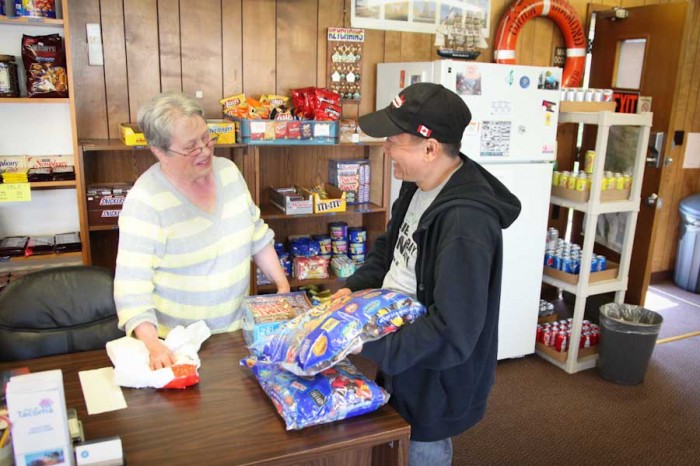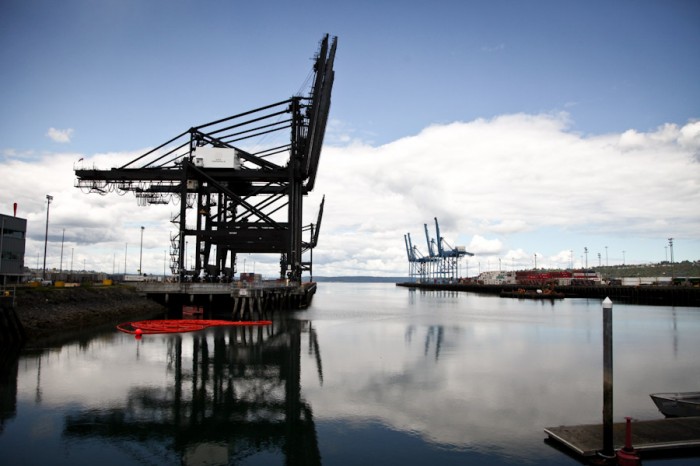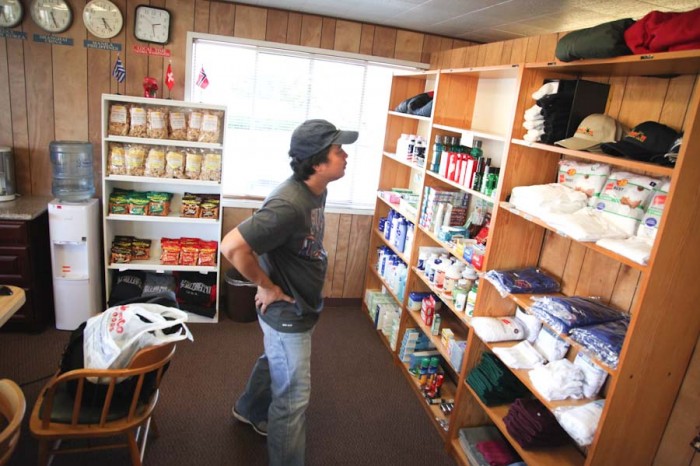
The business of shipping is all around us in the Puget Sound region.
Brightly colored cranes, containers and mammoth cargo ships are all part of the local landscape — the incoming computers and cars and outgoing grain and timber a daily reminder of the global economy and our place in it.
Less visible are the hundreds of international seafarers who pass through our local ports every month. They are cooks and mechanics, engineers and officers, all who help make this worldwide system possible.
When their ships are here and they have a few hours to themselves, they become a quiet population of temporary travelers often looking for a little comfort and fun.
“Seafarers come from over 150 different countries in the world, and I’ve met ones from over 100,” says Paul Peterson, standing under a wall full of clocks that state the time in New Delhi, London, Kowloon, Athens, Cairo, Rome, Stockholm, Manila and Shanghai.
Peterson is director of the Tacoma Seafarers’ Center, a Christian nonprofit at the Port of Tacoma that provides services to visiting seafarers from around the world.

The center itself is modest — a single-story house with two white minivans parked alongside a tiny shed of a chapel. Much of the center’s support comes from churches, but shipping companies also contribute. There are Christian pamphlets in various languages and a painting of Jesus helping to guide a sailor through a storm.
But Peterson is quick to explain that there is no religious “pressure” at the center and that the resources it provides are for everyone.
Those resources include inexpensive comfort food: from Filipino snacks like pork rinds and spicy nuts (the majority of seamen who visit the center are from the Philippines) to cups of freeze-dried noodles and Snickers bars. There’s also mouthwash, toothpaste, deodorant and packs of undershirts for those running low.
In addition to the small store, there are complimentary cookies set in front of a big TV turned to world news and bins of donated clothes for those who need them.
But most important of all, there are computers and a free Internet connection.
Access to long-distance communication is a crucial resource provided by the center, and Peterson tells stories of seaman visiting online with children they have yet to meet in person and mourning parents who have died back home.
“Most seamen have a contract for 10 months, so with the laptops and Skype they can see their babies, mother, father, wife,” says Peterson pointing toward a room with a bank of older computers.
To prove his point, the first group of visiting sailors this Monday made a beeline for the computers or parked themselves on one of the overstuffed couches to connect a personal device to Wi-Fi. The excited greetings of family members quickly filled the small space.

In addition to providing basic supplies and speedy Internet, the center helps visiting seamen have some fun. Volunteers are available to shuttle them to ethnic restaurants for some familiar food and to local sights for a little tourism.
But most often they want to shop — an irony not lost on Peterson who sometimes teases his visitors that they may well be buying the very goods they’re helping to ship over to the U.S.
“I’m going to buy a mobile phone,” says Amitha Premasiri, 21, of Sri Lanka, who is on his first voyage and was in the United States for the first time.
Some of the other seafarers discuss gifts they plan to buy for loved ones back home — T-shirts for teen daughters and perfume for wives. As he waited for the van that would take him to Tacoma Mall, Ranulfo Cabalda, of the Philippines, explained why the center is so important to him.
“They are helping us with what we need,” he said smiling.
Whether what they need is a little adventure or just a friendly face far from home.


1 Comment
Comments are closed.